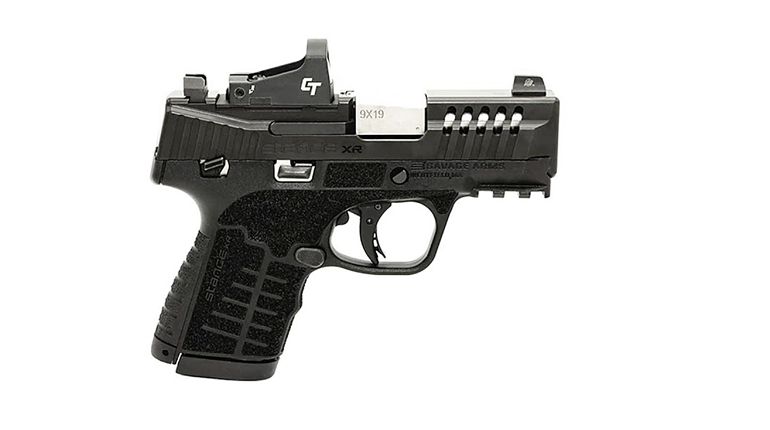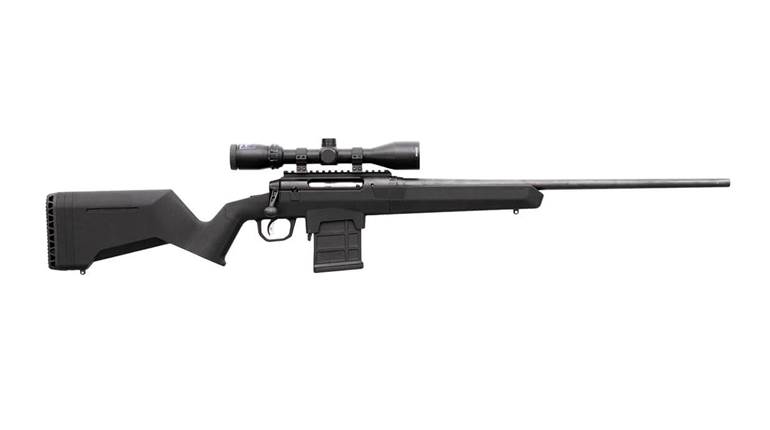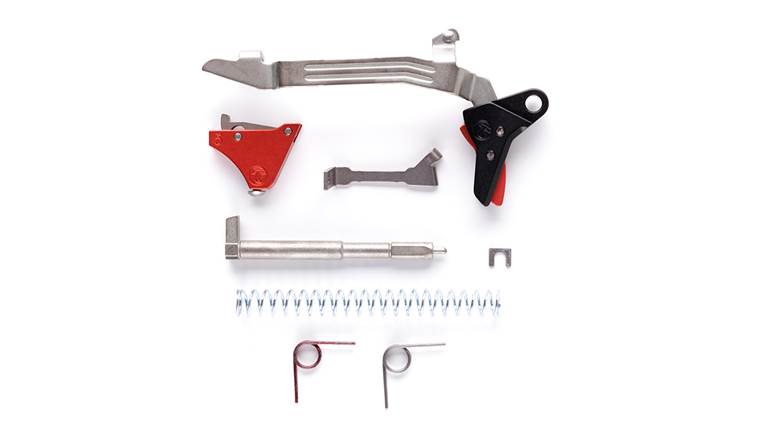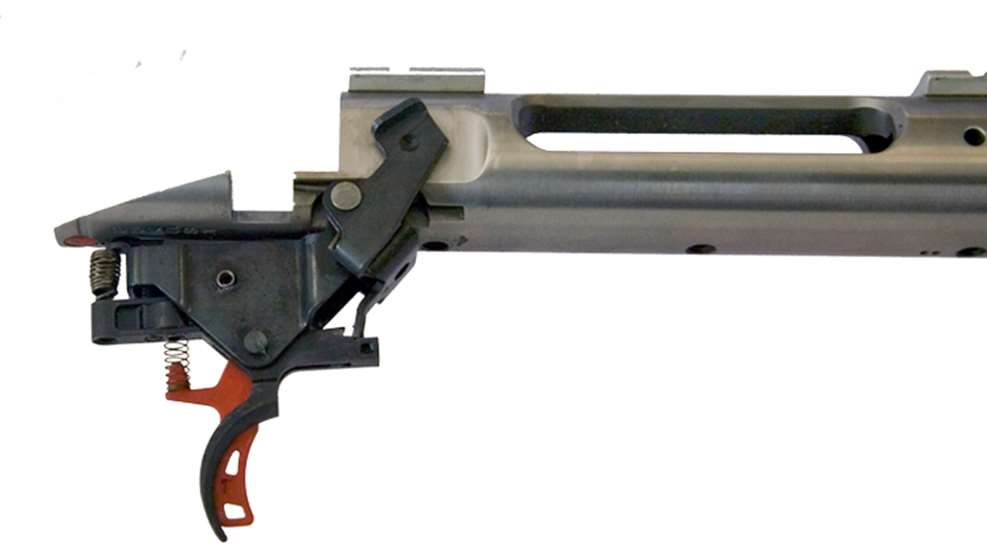
Everyone knows what a trigger is … or do they? Merriam-Webster defines a trigger: “a piece (such as a lever) connected with a catch or detent as a means of releasing it; especially: the part of the action moved by the finger to fire a gun.” That’s pretty good, but I think we can do better: A trigger is a lever or a series of levers that restrain and release the stored energy in a spring allowing either a hammer to strike a firing pin or releasing the pin or striker mechanism in a firearm. Having a clear definition of a trigger is critical in the understanding of how it works.
Today, firearms are generally discharged in one of two ways: either via a hammer or via a spring-loaded striker. A hammer is a chunk of metal with three basic components: a pivot point, a sear and a striking face. When the hammer is cocked it is held in place by a sear that engages a terminal point on the trigger. The hammer—and often the trigger—are held in place by spring tension. To fire the firearm, the trigger is usually pulled by the index finger of the shooting hand; it overcomes the spring tension holding it in place, disengages the sear, thus freeing the hammer to pivot under its own spring tension and strike a firing pin that strikes the primer and fires the gun. In other rifles—bolt actions being the primary example—the firing spin or striker is held under spring tension by the trigger engaging a sear located on the pin. Pressing the trigger frees the pin or striker to move forward with enough velocity and momentum to strike the primer with enough energy to fire the gun.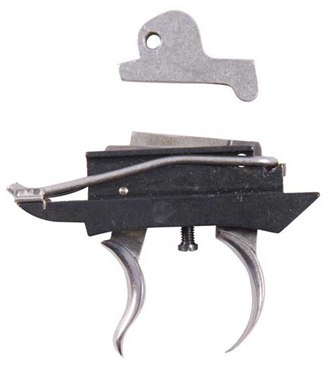
A double set trigger allows the shooter to fire the rifle with minimal disturbance to its aim. In this double set trigger from Brownells, the rear trigger sets the front, and all it takes much less pull weight on the front to set it off. Image courtesy Brownells
One of the first triggers did not release any spring tension. On a matchlock firearm, the trigger was a simple lever that moved a serpentine-shaped hammer that held a glowing match toward the flash hole. Flintlocks were one of the first to utilize a spring-loaded hammer, as well as a set trigger—more about that later. Once rifling was introduced, marksmanship became a skill that was held in high regard, and early on marksmen figured out that a good trigger—one that could be released with little disturbance to aiming—was a critical factor in their success to place a shot where they wanted it to go.
Until the Savage Model 95, virtually all lever-action rifles utilized an external hammer. Bolt-action rifles, as mentioned, use spring-loaded firing pins. Most semi-automatic rifles use an enclosed hammer within the receiver. Slide-action rifles may use either an internal or external hammer, though some, like the Remington 141 use a spring-loaded firing pin.
Rifles use either a single-stage or two-stage trigger. On a single-stage trigger, the action is pretty direct. Pressure on the trigger eventually overtakes the spring and friction resistance, disengaging the sear from the trigger and firing the rifle. Most sporting rifles have a single-stage trigger. Military and some target rifles have a two-stage trigger. With a two-stage trigger there is some take up—perhaps as much as 1/2" and often referred to as “slack”—of the trigger where no movement of the trigger on the sear exists. Once that take up is achieved, the engagement is like a single-stage trigger. The trigger overcomes the spring tension and friction and disengages the trigger from the sear. Some call two-stage triggers a “poor man’s set trigger” because the take up serves as a safety to help prevent an inadvertent discharge.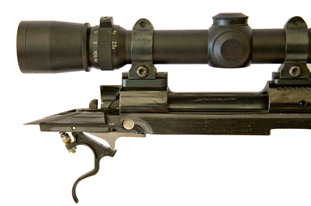
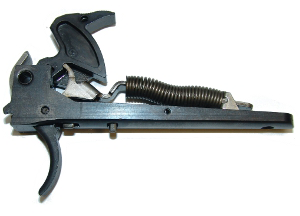
The original trigger on Winchester’s Model 70 rifle (left) was one of the easiest for an experienced gunsmith to adjust. As timeless as the Winchester Model 94 is (right), the rifles often had gritty triggers. However, with some careful work, a competent gunsmith can turn a gritty and heavy factory ’94 trigger into an acceptable one. Images courtesy Winchester
As we have seen, knowledgeable marksmen often prefer triggers that do not disturb the aiming of the rifle. To make a long-range or precision shot requires that the rifle be absolutely free of movement or anything that would disrupt the aiming of the rifle. Riflemen often use the following terms when describing a trigger.
Blade: This is the portion of the trigger exposed from the rifle that the trigger finger (usually the index finger of the shooting hand) engages. Blades have traditionally been curved to mimic the contour of the trigger finger, but lately some have gone to a flat-face trigger blade. The thinking there is that a flat trigger reduces the feel of the amount of pressure needed to fire the rifle. In reality, it is a personal preference often overshadowed by its looks. Some feel that a flat trigger blade looks cool.
Break: The point where the trigger disengages with the sear.
Creep: The amount of movement needed before the trigger breaks is called creep. Creep is undesirable because it allows movement of the rifle while trying to fire the shot.
Crisp: A crisp trigger has no perceptible movement before it disengages the sear. Some liken it to the breaking of a glass rod.
Gritty: As opposed to a crisp trigger, a gritty one feels as if there is inconsistent pressure needed to get to the break. Some characterize it as like sandpaper. A gritty trigger usually is caused by a couple of things, movement detected before the break and rough machining of the engagement surfaces. Gritty triggers are usually also heavy triggers, meaning that they require a lot more pressure to disengage.
Lock time: The time it takes to fire the rifle measured from the point that the sear is disengaged. A shorter lock time means there is less time for the firearm to move off target once the trigger is pulled.
Over-travel: Some triggers often have some over-travel to them, meaning that there is detectable movement of the trigger after it disengages. This movement can affect the practical accuracy of a rifle because the over-travel can induce some movement of the rifle before the bullet leaves the barrel.
Reach: Usually a term used with rifles with pistol grips, reach is the distance from the rear of the pistol grip to the center of the trigger. Folks with shorter fingers can find that getting the correct placement of the trigger finger on the trigger to be difficult. On the other hand, a person with a very large hand and long fingers can have the same problem with just the opposite condition. Either way, if the reach is incorrect it can affect the shooter’s ability to get the most from his or her rifle.
Reset: Reset applies mostly to semi-automatic rifles. It is the distance needed for the trigger to reset on the sear after the rifle has cycled. Some shooters hold down the trigger, thus not allowing it to reset properly. A shorter reset is desired by some competitive shooters so allow them to address subsequent targets more quickly.
Sear: A piece that restrains the hammer or striker from moving and striking the firing pin is called the sear. The sear can be a part of the hammer or striker, or it may be a separate piece of metal. Once the trigger disengages the sear it frees the hammer or striker to discharge the firearm.
Set Trigger: For those who really want precision, a set trigger is the way to go. Set triggers come in two types, single and double. A single-set trigger has one blade. To engage the set, the shooter presses the rear of the blade, moving it forward until he feels it click. It takes usually on the order of about 2 oz. of pressure to fire the rifle. A double set trigger has two trigger blades. Usually it is the rear blade that sets the front blade. Most set triggers can be fired in a conventional manner if necessary.
Shoe: A trigger shoe is an aftermarket device that attaches to the trigger blade making it wider and giving the shooter the impression of a lighter trigger.
Stacking: Stacking describes the phenomenon of a progressively increasing amount of pull weight needed to fire the rifle.
Stop: A trigger stop is a device—often a set screw in the trigger blade—that can be adjusted to prevent over-travel in a trigger. These are more popular with pistols than rifles.
For most of today’s popular rifles there are aftermarket triggers available that can make a world of difference for the discerning shooter. Timney has been making aftermarket triggers since 1946 for just about any bolt-action rifle, as well as some AR-style rifles. It triggers are adjustable for weight, but you can specify just about any reasonable weight when you order one and it will arrive factory pre-set. McCormick, J.P. and Jewel make some superb aftermarket triggers as well.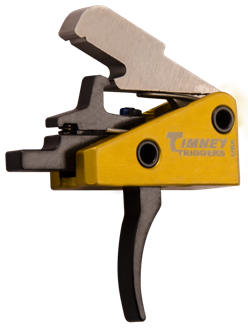
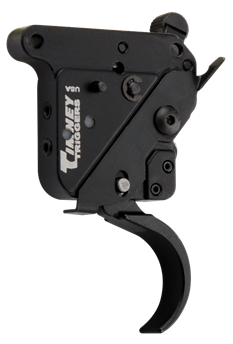
Timney has been making quality aftermarket triggers for a variety of rifles since 1946. The one for an AR-type rifle (left) takes just a few minutes to install and increases the practical accuracy several fold. Aftermarket triggers for bolt-action rifles started as a cottage industry between World Wars I and II when many shooters brought home Mausers, Enfields and Springfields for sporterizing. The Timney trigger for a Remington 700 (right) can be ordered with a pre-set pull weight of 1 1/2 lbs. Images courtesy Timney Triggers
This trigger stuff attracted the attention of then CEO of Savage, Ron Coburn. He and his engineering team quietly set about designing a trigger that could easily be adjusted by the end user to a pull weight between 1.5 and 6 lbs., yet remain safe in virtually any condition. As a bonus, the trigger has an incredibly quick lock time of 1.6 milliseconds. The Accu-Trigger made its debut in 2002, and to say it set the rifle world ablaze would be an understatement. While it may look a bit unconventional with its safety blade protruding from the center of the trigger blade proper, that safety blade allowed those of us who really need and want a light trigger, with little to no creep to have one, and it was available from the factory. Today there are a number of copies and spin-offs of the Accu-Trigger, but it remains one of the best factory triggers extant.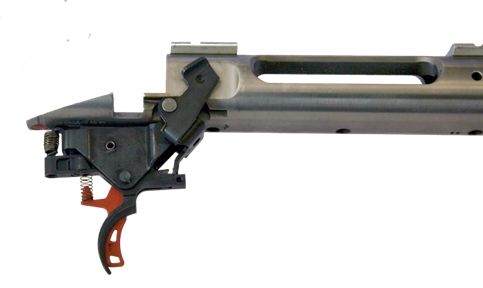
Savage’s Accu-Trigger, introduced in 2002, revolutionized the concept of a good, safe factory trigger.
The trigger is the point of interface from the shooter and the discharging of his firearm. It is a mechanical device, and as such, it needs thought and consideration, as well as an occasional cleaning. Regardless of design, Rule 3—Keep your finger off the trigger until your gun is on target, and you are ready to shoot—is the best means of preventing a negligent discharge. A lot of engineering has gone into the modern trigger to make it accurate, reliable and safe.













